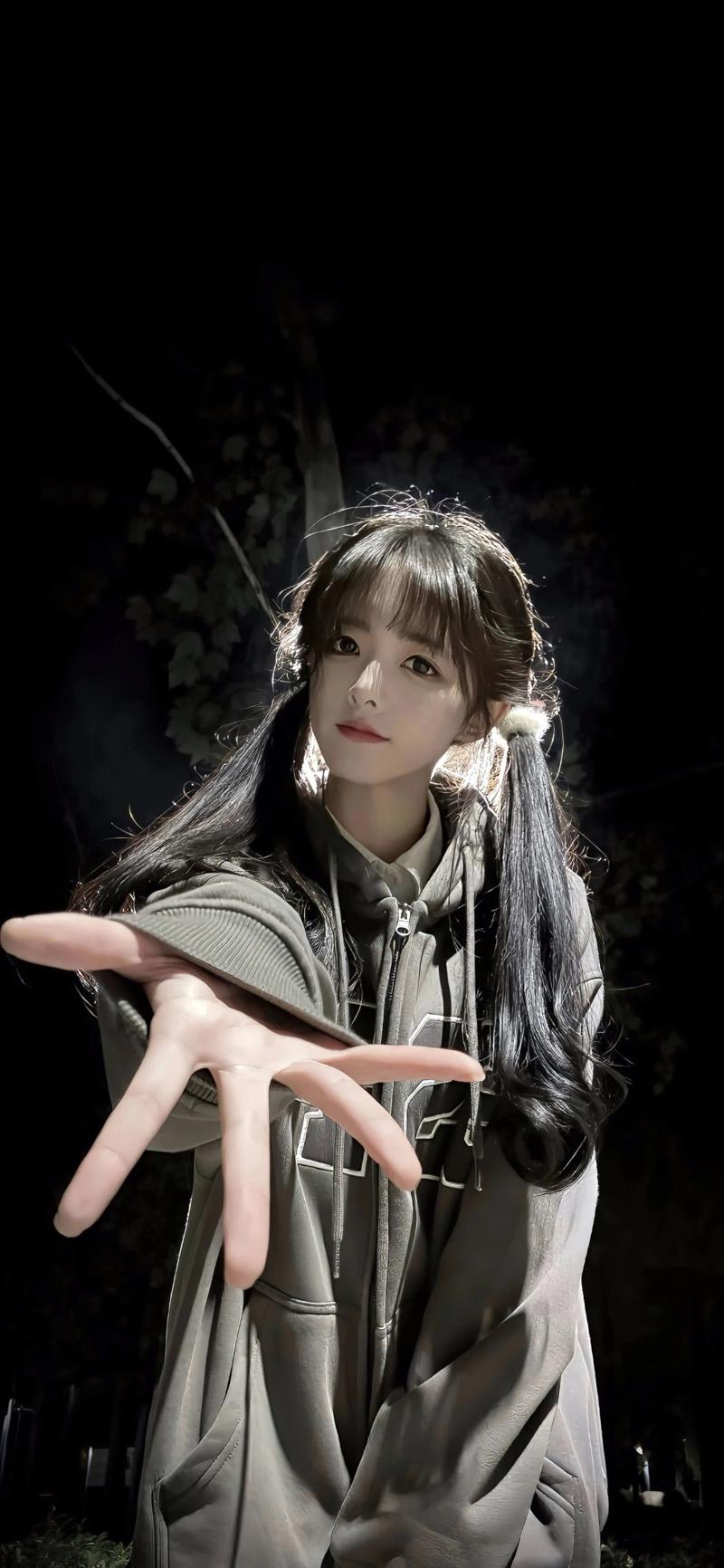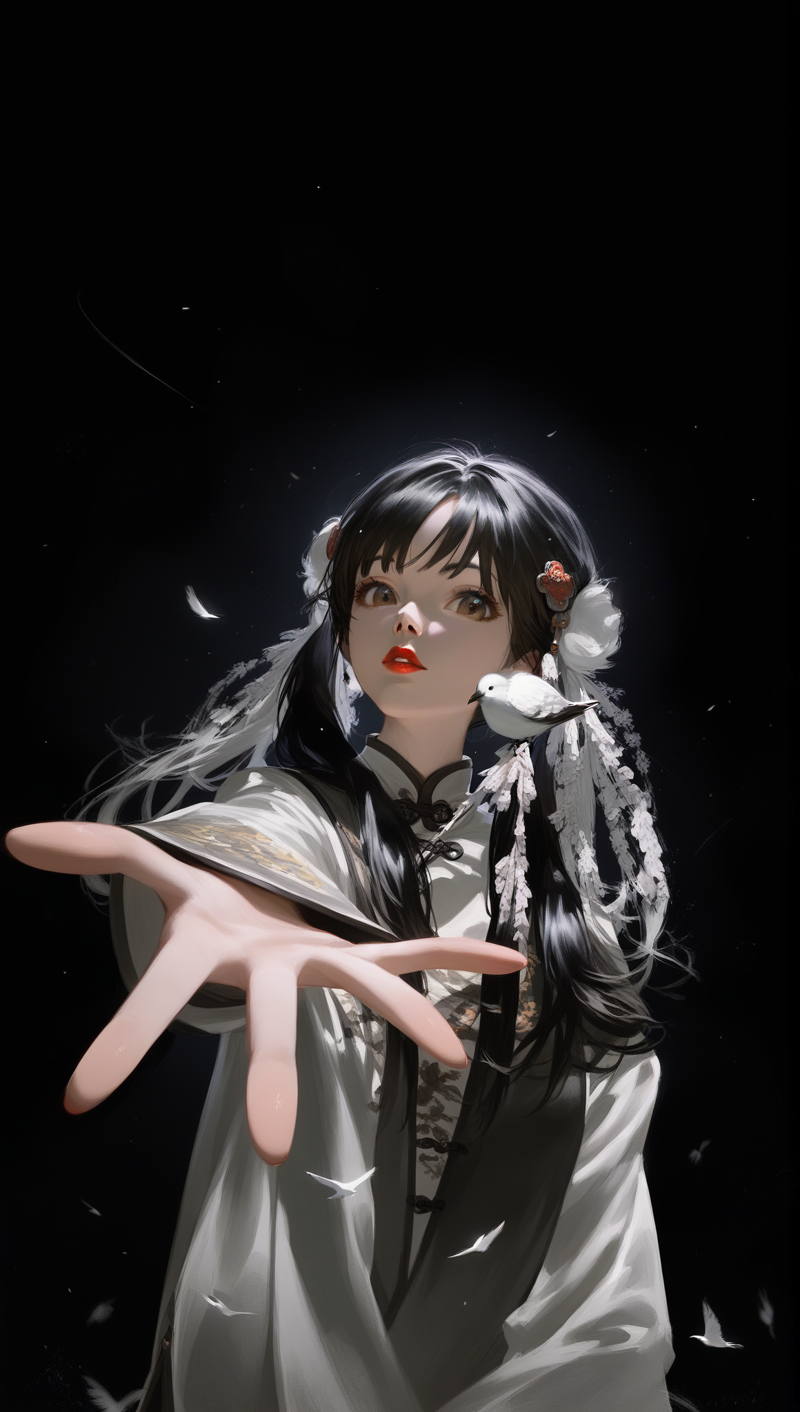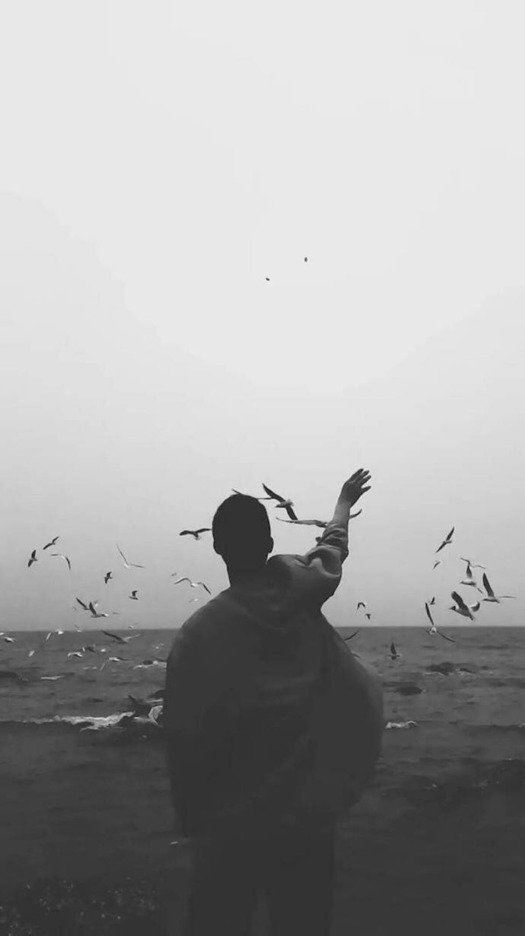Tponynai3 - v5
Verwandte Schlüsselwörter & Tags
Empfohlene Prompts
score_9,score_8_up,score_7_up
score_8_up,score_7_up,1girl,solo
Empfohlene Negative Prompts
score_4,score_3,score_2,worst quality, bad hands, bad feet
score_4,score_3,score_2,score_1,ugly,bad feet
Empfohlene Parameter
samplers
steps
cfg
clip skip
resolution
other models
Empfohlene Hires (Hochauflösungs-) Parameter
upscaler
upscale
steps
denoising strength
Tipps
Für beste Ergebnisse High-Fix bei mittlerer Auflösung verwenden.
Versuchen Sie style_3 oder style_4, um Augendetails zu verbessern.
Versions-Highlights
Das Trainingsmaterial wurde reduziert. Nach dem Misserfolg von v4 startete ich ein neues Projekt, um meine Idee mit geringerer VRAM-Nutzung zu testen: Ich trainierte vier verschiedene Loras mit unterschiedlichen Stilen, angepasst an T-ponynai3. Das Originalmodell wurde ebenfalls auf Civitai hochgeladen. Nach erfolgreichem Testing begann ich, diese vier Stilgruppen als Additive in T-ponynai3-v5 einzufügen. Überraschenderweise verbesserte sich die Linienstruktur spürbar, wahrscheinlich durch das feine Trainingsmaterial. Für die vier Stile nutzte ich style_1 bis style_4 als Prompts. Leider wurden die Stile nicht klar getrennt oder wirkten schwach, sie verschmolzen gut mit dem Originalstil. Trotz fehlender Multi-Stil-Unterstützung wurde die Textur des originalen Nai3-Stils auffällig verbessert. Vielleicht klappt es in der nächsten Version besser. (Ich spiele sehr gerne Spiele; während des Trainings keine Spiele zu spielen ist hart für mich.)
The training materials for this version have been reduced. Due to the failure of v4, I launched another project to test my idea from a small perspective of memory usage, which is to train four different art styles of Lora adapted to T-ponynai3. Of course, the original model was also uploaded to Civitai. After testing the adaptability, I started training these four different art styles as additives into T-ponynai3-v5. Surprisingly, The line texture of v5 has improved to a high level, probably because I trained a very delicate material. For the marking of these four art styles, I used the prompt words from style_1 to style_4. Unfortunately, for some reason, these four art styles were not separated or the effect was weak, but rather integrated well into the original art style. Although it did not achieve the goal of supporting multiple art styles, it effectively elevated the texture of the original Nai3 art style to a higher level. Perhaps the next version can try to take it even further. (I really enjoy playing games, and it's too difficult for me to play computer games every time I train.)
Ersteller-Sponsoren
[Unbestätigt] Tonade ist der Schöpfer des T-ponynai3 Modells, c站 ID: Tonade, | 爱发电 (afdian.net)
Hier ist der Sponsoring-Kanal bei 爱发电. Wenn euch das Modell gefällt und ihr es unterstützen könnt, fühlt euch frei! Bitte nicht zwingen, danke für jede Unterstützung. Ich werde weiterhin daran arbeiten, das Modell zu verbessern!
929721518 persönliche QQ-Gruppennummer, bei Fragen zu tpony könnt ihr gerne rein und nachfragen. Bitte vermerkt c站.
Das Modell hat bereits ein integriertes VAE, es ist kein zusätzliches VAE notwendig
The model already has included vae, there is no need to add additional vae
Die beste Rendering-Strategie ist eine mittlere Auflösung mit High-Fix, anstatt direkt auf hohe Auflösung zu gehen
The best generate strategy is to use high-fix at a moderate resolution, rather than directly using high-resolution direct output
[Unbestätigt] Tonade ist der Schöpfer des T-ponynai3 Modells, c站 ID: Tonade, | 爱发电 (afdian.net)
Hier ist der Sponsoring-Kanal bei 爱发电. Wenn euch das Modell gefällt und ihr es unterstützen könnt, fühlt euch frei! Bitte nicht zwingen, danke für jede Unterstützung. Ich werde weiterhin daran arbeiten, das Modell zu verbessern!
(33) T-ponynai3-v5 - (angepasste Gewichtsversion) | Stable Diffusion Checkpoint | 吐司 tusi.cn (tusiart.com) tusiart (china version tensor) Online-Generierungslink
(Da das Modell nur gleichzeitig auf Tusi und Tensor existieren kann, ist es besser, es bei Tusi zu verwenden. Sollten Probleme auftauchen, gebt mir bitte mehr Feedback.)
Version v5 hat vier neue Styles hinzugefügt, mit denen sich Bilddetails über style_1 bis style_4 feinjustieren lassen (theoretisch, die tatsächlichen Effekte sind eher mystisch)
V5 version hat 4 neue Styles hinzugefügt, mit denen Details über style_1 bis style_4 fein abgestimmt werden können (theoretisch, jedoch sind die tatsächlichen Effekte mystischer bzw. schwächer)
Dieses Modell unterstützt perfekt Loras, die auf ponyv6 basieren, ani3 und sdxl1.0 Loras sind teilweise ebenfalls adaptierbar
This model perfectly supports lora trained with ponyv6 as the base model, and the Lora of ani3 and sdxl1.0 can also be adapted to some extent.
Image-Inpainting-Test basierend auf v4.1 (dieser Teil wurde in vorherigen Versionen übersehen)
Image inpaint testing based on v4.1 (this is a previously overlooked part)




pony ist großartig und sehr kompatibel. Dieses Modell unterstützt ani und pony Loras.
Notwendige Grundeinstellungen und Effekte sind wie bei ponydiffusion.
positive:(score_9,score_8_up,score_7_up,score_6_up,score_5_up,score_4_up)
ODER (score_9,score_8_up,score_7_up)
Negative Begriffe können hinzugefügt werden:
negative: (score_4,score_3,score_2,score_1),
Man kann auch übliche negative Begriffe aus dem NAI-Bereich verwenden, zum Beispiel:
negative: worst quality, bad hands, bad feet
Ich hoffe, es gefällt euch ᕕ(◠ڼ◠)ᕗ basierend auf nai3 und ponyv6
Trainingshinweise: v1 verwendet 94 Bilder, v2 119, v3 348, v3.5 474 Bilder, die mit nai3 generiert wurden. Lora wurde in das Basismodell zur Feinabstimmung eingemischt, alle Künstler-Tags, die mit ponyv6 unterstützt werden, funktionieren, aber die Nutzung von mehr als zwei Künstler-Tags kann den Hintergrund zerstören. Bisher kann das Modell Charaktere aus Genshin Impact generieren, mehr ist nicht getestet. Ich bin beeindruckt von der Nachbildung des nai3-Stils. Das Basismodell ist eine Fusion aus T-anime-xl, ponyv6 und ani3, wurde aber noch nicht veröffentlicht.
Trainings-GPU war meine eigene 3090, Trainingsdauer war 7, 12, 35 und 47 Stunden für v1 bis v3.5.
Training Instructions: Merge Lora nutzte 94 Bilder für v1, 119 für v2, 348 für v3, 474 für v3.5, generiert von NAI3 zum Feintuning des Basismodells. Pony unterstützt alle Künstler-Tags von ponyv6, aber keine zusätzlichen von nai3. Mehr als zwei Künstler-Tags können Hintergründe zerstören. Aktuell können Genshin Impact Charaktere generiert werden. Ich habe nicht viel getestet, bin beeindruckt von der Nachbildung des nai3-Stils. Das Basismodell ist eine Fusion aus T-anime-xl, ponyv6 und ani3 und noch nicht veröffentlicht.
Als Trainings-Grafikkarte wurde meine 3090 genutzt, Trainingszeiten: v1 7h, v2 12h, v3 35h, v3.5 47h.
v1
Ein interessanter Versuch
An interesting attempt
v2
Auf Basis von v1 wurde der Trainingssatz leicht erweitert und etwa 30 Stunden Parameter ausprobiert, aber der Stil weist noch Overfitting auf, z.B. Doppel-Nabel und chaotisches Haar
On the basis of v1, the training set was slightly increased and went through about 30 hours of trial and error, but the trained art style still had some overfitting, such as double navel eyes and messy hair
v3
Die Gliedmaßen sind besser als in v2. v3 erzeugt visuell beeindruckendere Füße und schwierigere Perspektiven. Der AI-Eindruck der Haare ist schwächer als in v2, da der Trainingssatz von v2 zu klein war. Doppel-Nabel aus v2 ist verschwunden. Insgesamt verbessert die dreifache Trainingssatz-Größe und größerer Dim-Parameter den Stil auf natürlicher Weise und bei langen Prompts ist v3 deutlich leistungsstärker als v2.
The limbs of v3 are better than those of v2. In terms of understanding footfocus, v3 can generate feet with greater visual impact and higher difficulty perspective. The AI feeling of v3's hair is also weaker than that of v2, because v2 has too little training set, so the hair part may be slightly overfitting, and the occasional double navel eyes that appear in v2 are also gone. Overall, three times the size of the v2 training set and a larger dim parameter make the art style fit more natural, and the performance is much stronger than v2 under long prompts.
v3.5
In dieser Version sind Qualitätsprompts weniger streng, es kann komplett auf die Qualitätsprompts der Pony-Ästhetik verzichtet werden. Es können gelegentlich sinnlose Farbblöcke entstehen, einfach Qualitätsprompts wie score_1, score_2 durch worst quality ersetzen. Ich habe ca. 150 zusätzliche Trainingsbilder ergänzt, um den Stil auszugleichen und die Lernkurvensteigung reduziert. Dadurch überfittet das Modell weniger und kann mehr Loras und kreative Prompts nutzen. Diese Version ist freier als v3 und zeichnet Männer besser als v3. Farbgebung und Stil sind nicht so grell und fettig.
In this version, the requirements for quality words are not so strict, you can completely not to use the quality words of pony's aesthetic score to plot the picture, and occasionally there will be a situation where the picture generates meaningless color blocks in the test, you only need to replace the quality words of the aesthetic score with 1.5 commonly used quality words, such as score_1, score_2 replace it with worst quality. In this version, I added about 150 more training sets to balance and enrich the art style, and reduced the initial slope of the learning curve, which makes this model less overfitted and can be adapted to more lora and whimsical prompts. Overall, this version is a freer version than the v3 version, and this version is much stronger than the v3 version, and the colors and style of painting under some hints are not so bright and greasy.
v4
Diese Version nutzte 798 Bilder und wurde 90 Stunden auf einer 3090 trainiert. Gegenüber v3.5 zeigt sie bei bestimmten Prompts bessere Kompositionen und genauere Details, z.B. weniger Geisterbilder bei Fingern und Überlappungen an Körperteilen. Ziel waren mittellange und etwas kürzere Prompts, denn niemand will eine extrem lange Prompt-Kette. Nach Entfernen der Pony-Qualitätsprompts verbesserte sich die Bildqualität stark im Vergleich zu v3.5, die Bilder wirken flacher und näher am klassischen Anime-Stil. Die Feinabstimmung an Ponyv6 mittels Bildanzahl geht dem Ende zu; als nächstes werden Trainingslabels der Prompts analysiert, um in Ponyv6 begrenzte Trainingsmaterialien mit mehr steuerbaren Prompts (z.B. Ästhetik-Score) anzureichern. Weiterhin werden neue Trainingsmaterialien hinzugefügt, z.B. zu Szenen und Füßen (Fuß-Trainingsmaterial bei v4 scheinen etwas knapp).
This version used 798 images as training materials and trained for 90 hours using a 3090 graphics card. This version has a more accurate composition and depiction of certain parts in certain prompts compared to v3.5, such as ghosting of fingers and overlapping of some body parts. In terms of prompts, my main training goal is to use medium and slightly shorter prompts, as nobody likes to write a long string of prompts to generate high-quality images, right? After removing the quality prompt of Pony's aesthetic score, the image quality has been significantly improved compared to v3.5, and the resulting quality tends to be more flat rather than three-dimensional, closer to the classic anime style. The testing of the fine-tuning effect of Ponyv6 on the number of images is nearing completion. The next step is to start with the training labels of prompts and try to add more adjustable prompts to Pony's limited number of single training materials (such as adding aesthetic scores, the current training logic still uses mainstream quality words to cover Pony's aesthetic score quality words), and continue to add suitable new training materials, such as scene training materials and more foot training materials (v4's foot training materials seem to be a bit scarce).
v4.1
Ich entschuldige mich bei allen Nutzern, dass so bald eine neue Version erschien, das verlangt viel vom PC-Speicher und der Netzgeschwindigkeit. O_O
Firstly, I would like to apologize to all users for the release of a new version in such a short period of time, which greatly tests the computer's memory and network speed. O_O
Diese Version basiert auf den Armen von v4. Da deren Qualität schwer zu kontrollieren war und die Hand-Perfektion nicht den Erwartungen entsprach, haben mein Freund 木猫猫猫 und ich einige Anpassungen gemacht. So erreicht v4.1 die erwartete Qualität an den Gliedmaßen. Ich werde xy-Grafiken veröffentlichen, die den Fortschritt gegenüber v4 mit denselben Parametern zeigen.
This new version is based on the limb debugging version of v4. Due to the difficulty in controlling the limb effects of v4, the perfection rate of the hands did not meet my testing expectations in the past few days. So my friend 木猫猫猫 and I made some adjustments and improvements to v4, which ultimately made the limbs of v4.1 meet my expectations. I will release several xy graphs to clearly show the improvement of v4.1 compared to v4 under the same parameters.
v5
Das Trainingsmaterial wurde reduziert. Nach dem Misserfolg von v4 startete ich ein neues Projekt, um meine Idee mit geringerer VRAM-Nutzung zu testen: Ich trainierte vier verschiedene Loras mit unterschiedlichen Stilen, angepasst an T-ponynai3. Das Originalmodell wurde ebenfalls auf Civitai hochgeladen. Nach erfolgreichem Testing begann ich, diese vier Stilgruppen als Additive in T-ponynai3-v5 einzufügen. Überraschenderweise verbesserte sich die Linienstruktur spürbar, wahrscheinlich durch das feine Trainingsmaterial. Für die vier Stile nutzte ich style_1 bis style_4 als Prompts. Leider wurden die Stile nicht klar getrennt oder wirkten schwach, sie verschmolzen gut mit dem Originalstil. Trotz fehlender Multi-Stil-Unterstützung wurde die Textur des originalen Nai3-Stils auffällig verbessert. Vielleicht klappt es in der nächsten Version besser. (Ich spiele sehr gerne Spiele; während des Trainings keine Spiele zu spielen ist hart für mich.)
The training materials for this version have been reduced. Due to the failure of v4, I launched another project to test my idea from a small perspective of memory usage, which is to train four different art styles of Lora adapted to T-ponynai3. Of course, the original model was also uploaded to Civitai. After testing the adaptability, I started training these four different art styles as additives into T-ponynai3-v5. Surprisingly, The line texture of v5 has improved to a high level, probably because I trained a very delicate material. For the marking of these four art styles, I used the prompt words from style_1 to style_4. Unfortunately, for some reason, these four art styles were not separated or the effect was weak, but rather integrated well into the original art style. Although it did not achieve the goal of supporting multiple art styles, it effectively elevated the texture of the original Nai3 art style to a higher level. Perhaps the next version can try to take it even further. (I really enjoy playing games, and it's too difficult for me to play computer games every time I train.)
Hier eine Zusammenfassung einiger Probleme mit Version v5.
1. Lora-Kompatibilität, Probleme mit Gliedmaßen und verschwommenen Augen. Die Lora-Gewichte waren bei der finalen Trainingseinstellung zu hoch, was zu Overfitting führte. Diese optimierte Version reduziert die entsprechenden Gewichte. Die Stabilität der Gliedmaßen und die Lora-Kompatibilität haben sich verbessert. Ich habe Vergleichsbilder mit v4.1-Loras erstellt. Das Problem der verschwommenen Augen resultiert vermutlich daraus, dass style_1 trainiert wurde, da die Augen in den Originalbildern unscharf sind. Verbesserung möglich mit style_3 oder style_4.
2. Probleme bei der Belichtung von Volumenlicht. Ich hatte das Problem im Test nicht, vermutlich wurde der noise offset-Trainingsparameter verwendet, der die Sensitivität für Licht-Prompts erhöht. Gleichgewichtungen der Licht-Prompts erzeugen hellere Bilder. Ich empfehle, nicht mit Klammern und Zahlen das Gewicht zu erhöhen. Wegen der Sensitivität von sdxl kann man Versuche mit mehrfacher Wiederholung des Prompts machen. Der Parameter diente zur Verbesserung der zu gelb wirkenden Bilder bei wenigen Prompts. Vergleichsbilder sind verfügbar.
3. Verringerte Modellkomplexität. V5 ist theoretisch und praktisch ein saubereres und vielseitigeres Modell als vorherige Versionen. Unter bestimmten Prompts haben sich Genauigkeit und Ausdruck deutlich verbessert, siehe Vergleichsbilder. Das Training umfasste keine zu komplexen Materialien, da zu komplexe Bilder Overfitting und Detailverlust verursachen können.
Ziel: Ich möchte ein Modell mit ausreichend Unterschieden zur Vorgängerversion, nicht ein fast identisches Modell veröffentlichen. Das Feedback ist ein wertvoller Lernprozess ohne eigene Kosten für Fehler. In der nächsten Version möchte ich mehr Material für verschiedene Stile hinzufügen, um eine bessere Integration und Trennung zu ermöglichen. Spezifische Prompts sollen den Stilwechsel ermöglichen, was neue Trainingstechniken erfordern kann. Danke für euer Feedback!
Summarize some issues regarding the v5 version.
1, Lora compatibility and issues with limbs and blurred eyes. Lora compatibility is that I used too much final weight for this training, and in some cases, overfitting may occur. This optimized version is the one that reduces the corresponding weight, and the limb collapse rate and compatibility with some Loras should be better. I have run several comparison charts of Loras trained with v4.1 for reference. The problem of blurred eyes should be the reason why I trained style_1. The eyes in the original material used are blurry, and can be improved by using style_3 or 4.
2. Exposure issues with volume light. I did not encounter this issue during testing, and the reason for it should be that I used the noise offset training parameter to increase the sensitivity of the model to light related prompt words, resulting in brighter results when the same weight of light prompt words were used. I suggest trying not to use parentheses and numbers to increase the weight. Due to the sensitivity of sdxl to prompt words, you can try repeating the same prompt words multiple times to avoid extreme results. At the same time, using this parameter is to fix the problem of generating yellow results under a small number of prompt words. I have run several comparison graphs for reference.
3. The problem of reduced model complexity. In theory and in practice. V5 should be a cleaner and more diverse model than the previous version, and with the help of some prompts, it should be able to achieve more accurate performance. Similarly, I ran several comparison charts for comparison. This training set did not use overly complex materials because I believe that overly complex images tend to overfit the results, which inevitably leads to a certain degree of detail loss.
Purpose: I hope to obtain a model that is significantly different from the previous version, rather than releasing a model that is almost identical to the previous version. This feedback from everyone is a great opportunity for trial and error, and I really don't have any trial and error costs on my own. In the next version, I will try to increase the amount of materials for different art styles, so that the art styles of different materials can be well integrated and separated. Using specific prompts to switch art styles may require some new training techniques. Thank you for your feedback!
Modell-Details
Diskussion
Bitte log in um einen Kommentar zu hinterlassen.



















